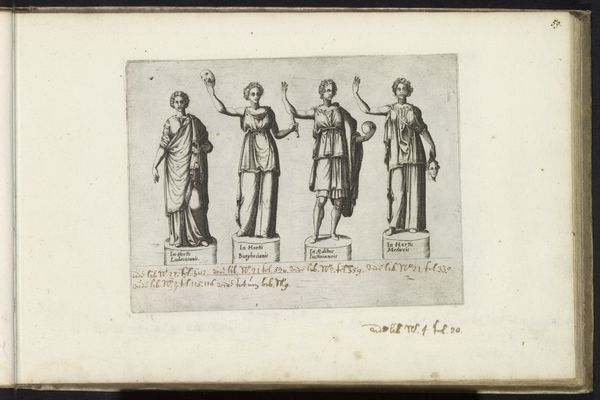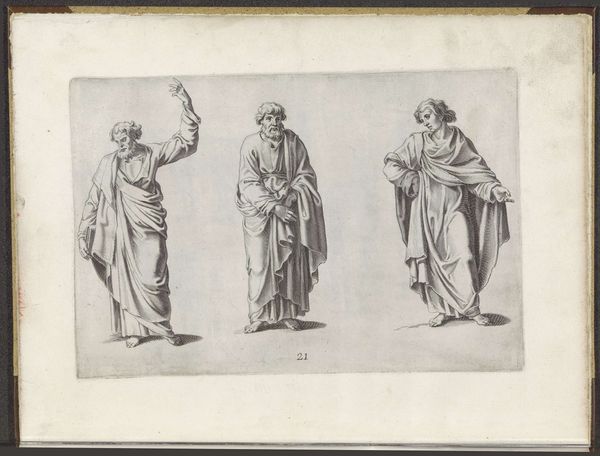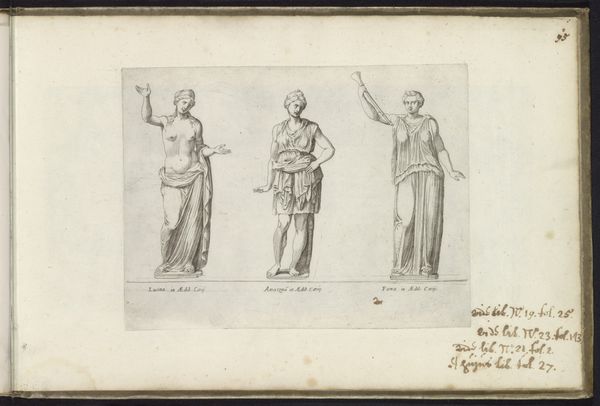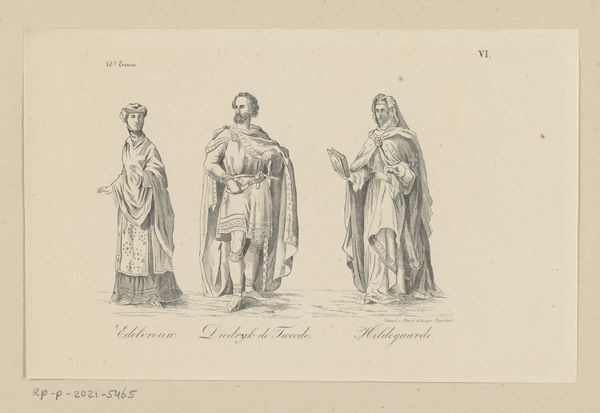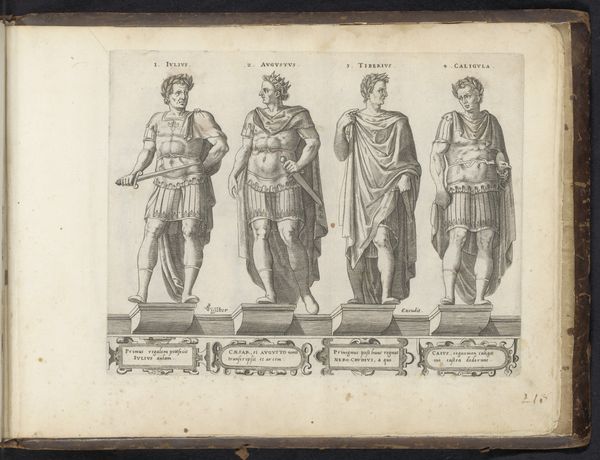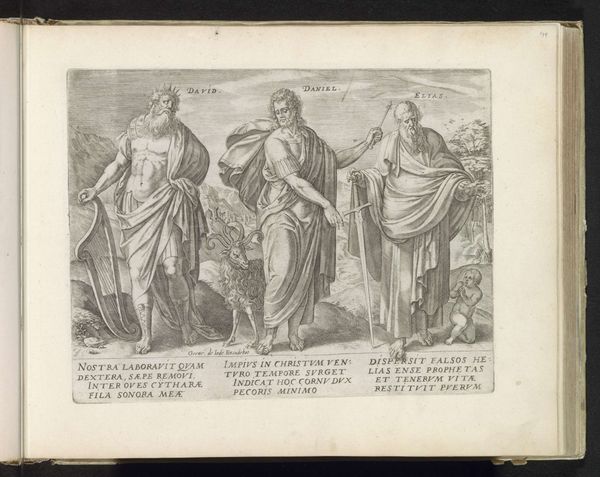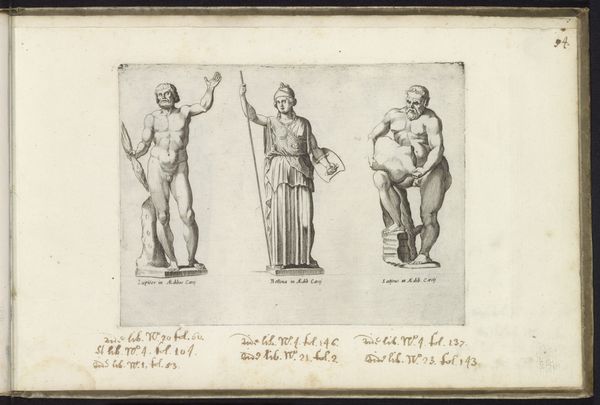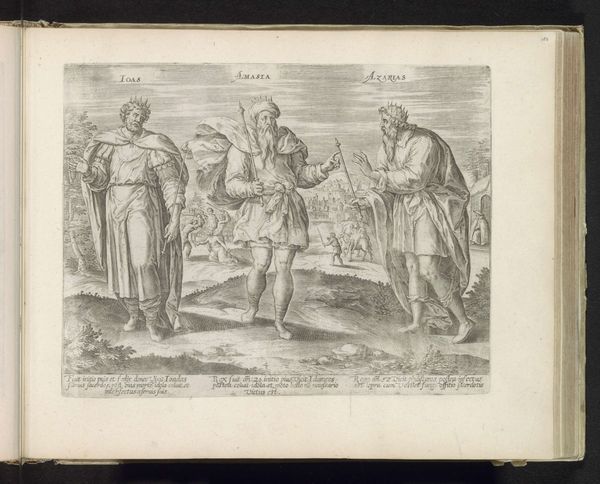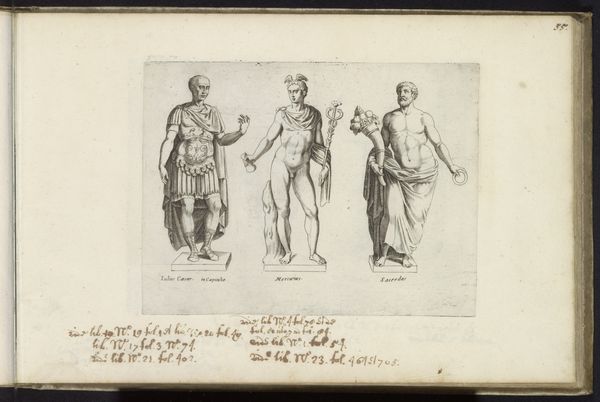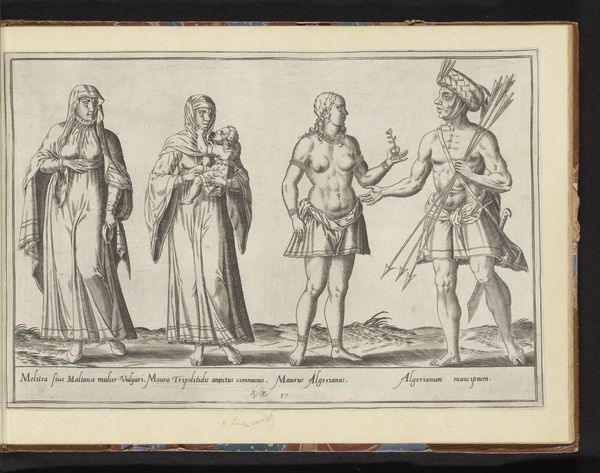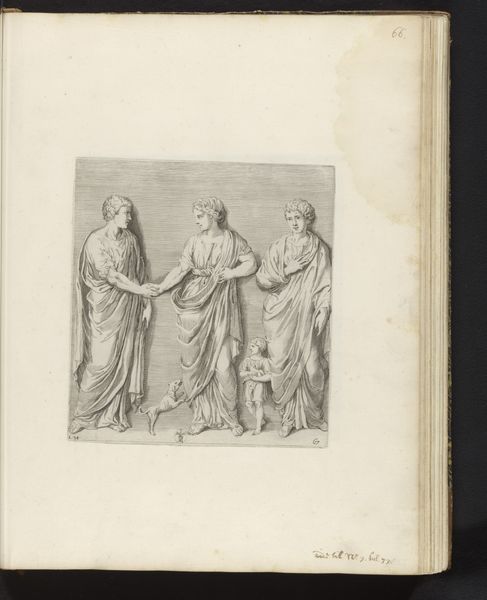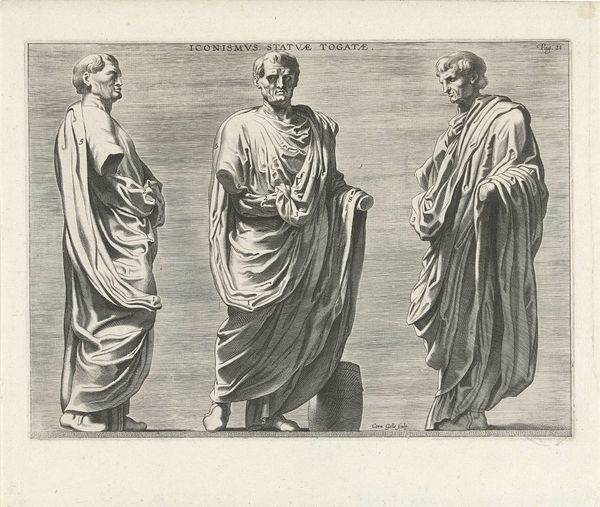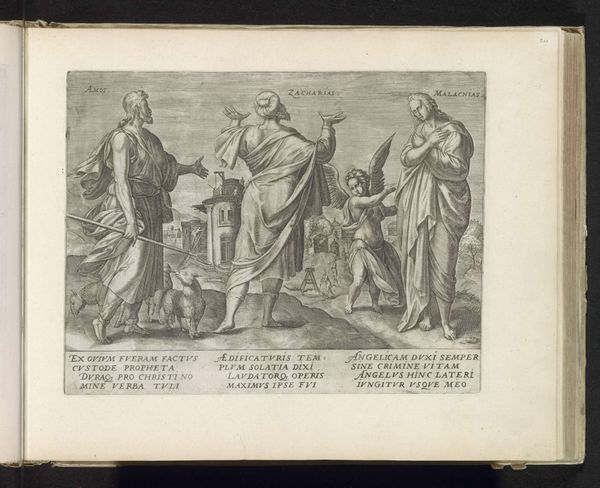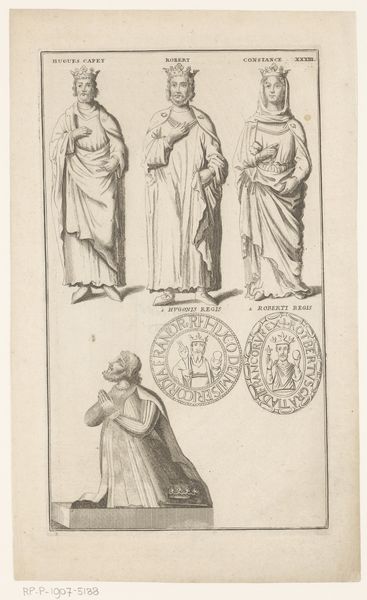
drawing, paper, pencil
#
portrait
#
drawing
#
greek-and-roman-art
#
classical-realism
#
figuration
#
paper
#
11_renaissance
#
pencil
Dimensions: height 180 mm, width 239 mm
Copyright: Rijks Museum: Open Domain
Editor: Here we have "Sculpturen van Pomona, Roma en Ceres," a pencil drawing on paper from sometime between 1538 and 1641. It features three standing figures, reminiscent of classical sculpture. What strikes me is the controlled precision of the linework. How would you interpret the composition and the artist's choices here? Curator: Formally, the drawing relies heavily on line and the suggestion of volume through shading. Note the meticulous execution. Each figure is presented frontally, fostering a sense of balance and symmetry across the composition. What do you observe in terms of the rendering of drapery and the use of line weight? Editor: I see how the varying line weights create depth. The drapery seems almost like fabric, and the way the pencil mimics the folds helps achieve a sculptural effect. Is it purely a demonstration of technical skill, or do the classical allusions contribute additional layers of meaning? Curator: Indeed. The adoption of classical forms speaks to a revival of antique ideals during the Renaissance. The figures are idealized; there's a serenity to their posture. These qualities create a visual experience where balance, proportion, and an evocation of the classical world take precedence. Editor: So, it’s the artist's technique and use of classical forms that are important here rather than some historical background? Curator: Precisely. We should focus primarily on what is immediately presented—the careful modulation of light and shadow, the harmonious arrangement of the figures, and the clear echoes of antiquity through artistic choices. Editor: I now understand that it’s important to analyze it in its formal aspects first, the rest could be secondary. Curator: Exactly. It reframes the artwork's message as an arrangement of aesthetic and theoretical principles.
Comments
No comments
Be the first to comment and join the conversation on the ultimate creative platform.
